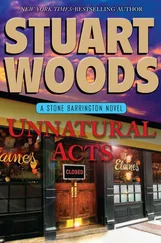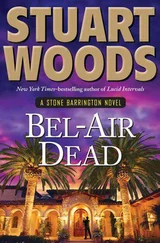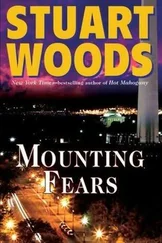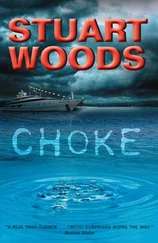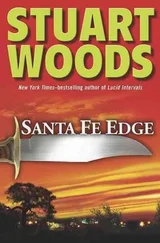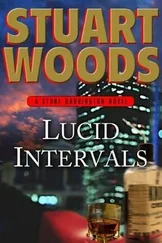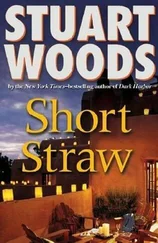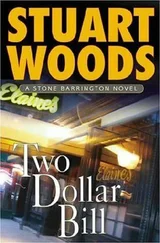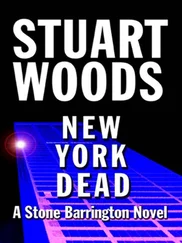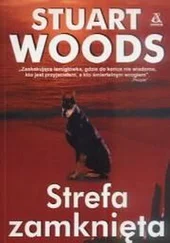“I thought that, in the unlikely event that she were tried, she would be acquitted in short order.”
“I’m afraid that’s what I thought, too,” Steele said.
“I suppose your interest in this business has something to do with insurance?”
“It certainly does. We insured the van Gogh in the value of sixty million dollars.”
“I’d heard it might be worth forty million.”
“People always over-insure,” Steele said. “It’s one of the ways we make our money.”
“Did you pay the claim?”
“Mark Tillman’s policy states that if the painting is stolen, we have a grace period of eighteen months before payment is due, to give us and the authorities time for a thorough investigation. Our time is up soon, and I’m afraid that unless the picture is recovered, we’ll have to pay.”
“I trust you laid off some of your liability on a reinsurer?”
“Lloyd’s took fifty percent of it. They’re very interested in the investigation, as you might imagine, and I’m speaking to you with their concurrence.”
“Arthur, what, exactly, are you speaking to me about?”
“Is Morgan Tillman your client?”
“We have no formal arrangement, nor even an informal one. She sought advice on dealing with the police when the windshield of her Bentley was smashed. I expect you’ll be receiving a number of claims for similar events.”
“Yes, I’ve heard about that rash of breakages.”
“I introduced her to Dino so that she could vent. She did so, and that was the extent of my involvement in her affairs.”
“So she is not your client?”
“I don’t intend to bill her, so no, I guess not.”
“All right, from here on we are operating under the strictest degree of confidentiality. Agreed?”
“Arthur, you are already my client, so agreed.”
“We — I, at least — feel that the stolen van Gogh may be a fake.”
“Arthur, surely you took steps to authenticate the painting before you insured it for sixty million dollars.”
There was a knock at the door and a waiter entered, pushing a cart. He served them a cold soup.
“Just leave the cart,” Steele said to him. “We’ll deal with the main course.” The man departed, closing the door behind him.
“We did take steps,” Steele replied, pouring them both a glass of Mersault. “Mark Tillman insisted that it be inspected at his apartment. For security reasons, he did not want it to leave the premises.”
“I don’t blame him,” Stone said.
“We had three experts — one from the Van Gogh Museum in Amsterdam representing Lloyd’s, one from the Metropolitan Museum, which expected to acquire the painting as a gift from Tillman’s estate upon his death, and an eminent authority on van Gogh, representing us.”
“And did they render their opinions?”
“They all agreed that it was genuine.”
“Then why do you believe that it might not be?”
“This is rather a long story, so drink your soup and listen.”
Stone picked up his soup spoon and began.
“Are you aware of the circumstances of Vincent van Gogh’s death?”
“I believe he committed suicide,” Stone said.
“That was the official verdict,” Steele said. “On Sunday, July twenty-ninth, 1890. He told the police later that he had shot himself in the abdomen. There has also emerged a theory that he might have been accidentally shot by one of three boys who were playing with a pistol near where he sat. The theory holds that he didn’t want to implicate the boys, and he wanted to die, anyway.”
“Now that you mention it, I think I read something about that.”
“You probably also know that Vincent’s brother, Theo, who was an art dealer in Paris, represented him in the sale of his work?”
“I do, and I believe he was singularly unsuccessful in that pursuit.”
“Quite right. No van Gogh painting was sold during Vincent’s lifetime. Theo, who believed strongly in his brother’s work, supported Vincent and dealt with all his affairs. He received a telegram on Monday morning, from the keeper of the inn where Vincent lived, telling him of the painter’s wounding. The telegraph office had been closed on Sunday. He took a train immediately for Auvers-sur-Oise, where Vincent had been living. When he arrived, he found several completed paintings in Vincent’s room, and he had them packed later and took them back to Paris with him on the train after the burial. But before Vincent died he told Theo that he had completed another painting.”
“And what had happened to that?”
“Vincent had taken his painting gear and his easel with him when he left the inn on Sunday morning. He painted the picture, a landscape of a local field with many flowers, then left his gear leaning against a haystack while he had lunch. The shooting, one way or another, took place soon afterward, and Vincent was able to make his way back to the inn, but he was unable to carry his gear. Later, when the police went looking for it, it was gone — including the picture he had painted.”
“Was it ever found?”
“No. It was posited that one of the boys had taken it, but all of them denied everything. There was an investigation, instigated by Theo, but it was cursory. No one ever tried to sell it, and the police had little interest in a work by a madman who was an unsuccessful artist of no reputation.”
“Then how did this painting come to be in Tillman’s hands?”
“The story continues. The young boy died many years later, and his son sold the contents of his father’s small house to a junk dealer in Arles. The painting is said to have been among his belongings. The junk dealer, failing to sell the picture, gave it to a woman who owned a framing shop, but oddly, she seemed to have no appreciation of it. She was apparently interested in framing, but not art. It reposed in the workroom in her shop for years. Upon her death it was discovered by an art dealer who had come to retrieve a picture she was framing for him, and, recognizing that a painting he saw there was a van Gogh, he bought the entire stock of the store, so that the picture’s existence would not be noticed. He then sold the picture to a Paris dealer, who then contacted Mark Tillman, to whom he had earlier sold a Monet. He needed money badly and could not wait for an auction, and Tillman paid him fifty thousand dollars for it. It was cheap, because it could not be authenticated by the usual means — no one had ever seen it and it had never been photographed.”
“Arthur, you still haven’t told me why you think the picture is a fake.”
“I believe that the whole story was contrived to support the authenticity of the painting. Have you ever heard of a man named Angelo Farina?”
“I believe I heard from my mother about him.” Stone’s mother, Matilda Stone, had been a well-known painter.
“I believe the picture was painted by Farina.”
Stone was intrigued. “Why do you think that?”
“Farina, in his youth, was a very expert and successful forger of art. He worked as an art restorer, repairing hundreds of old paintings, and he learned how they were made and with what materials. He is alleged to have sold hundreds of forgeries, many of which are said to be hanging in museums all over America and Europe, undetected. When law enforcement finally took an interest in him, he stopped doing forgeries and earned his living by selling his own paintings or copies of those of others’, identified as such, and by his art restoration business.
“It has been fifteen years or so since he says he stopped forging, and the statute of limitations has expired for any fakes he may have executed. Also, he left no paper trail — no receipts, bills of sale, no provenance, nothing — so it would have been difficult to convict him, anyway.”
Читать дальше


